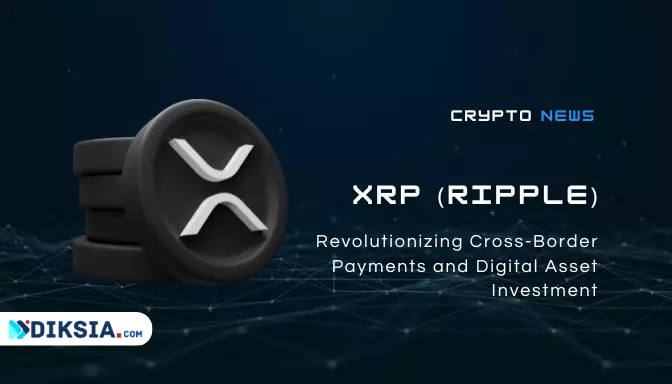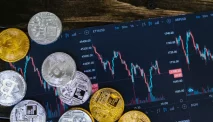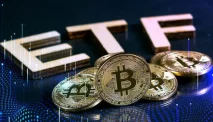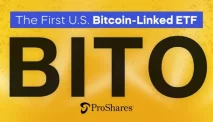Diksia.com - Ripple (XRP) is a cryptocurrency that aims to ease the friction of cross-border transactions through the use of its XRP Ledger software. Ripple is also the name of the company that created the Ripple network and its native token XRP. Ripple was originally founded in 2012 as OpenCoin.
In this article, we will explore the history, technology, market, and investment potential of Ripple (XRP). We will also provide some useful resources for further learning and research.
Ripple (XRP) Introduction
Ripple (XRP) is a cryptocurrency that has been making waves in the world of cross-border payments and digital asset investment. With its innovative technology and strong market presence, Ripple aims to transform the way we send and receive money across borders.
In this article, we will delve into the details of Ripple (XRP), its founders, key features, history, underlying technology, market performance, investment potential, and more.
Coin Details:
| Name | Ripple (XRP) |
|---|---|
| Date of Launch | 2012 |
| Founders | Chris Larsen, Jed McCaleb, Arthur Britto |
| Key Technology | RippleNet, XRP Ledger, Consensus Protocol |
| Current Price | $0.4824 |
| Market Cap | $25B |
| Volume (24h) | $904M |
| Total Supply | 99,988,655,562 XRP |
| Maximum Supply | 100 billion XRP |
| Circulating Supply | 52,254,289,650 XRP |
| Main Use Cases | Cross-border payments, remittances, digital asset investment |
What is Ripple (XRP)?
Ripple (XRP) is a cryptocurrency that is designed to facilitate fast, cheap, and secure global payments. Unlike most cryptocurrencies, which rely on decentralized networks of nodes to validate transactions, Ripple uses a network of trusted validators that operate under a federated Byzantine agreement protocol. This allows Ripple to achieve higher scalability, lower latency, and lower energy consumption than other cryptocurrencies.
Ripple also provides a suite of software products that enable financial institutions, payment providers, and other entities to leverage the Ripple network and XRP for various use cases. These include:
- xCurrent: A messaging system that enables end-to-end tracking and bi-directional communication between banks and payment providers.
- xRapid: A liquidity solution that uses XRP as a bridge currency to convert fiat currencies and reduce costs and risks.
- xVia: A payment interface that allows users to send payments across the Ripple network with a single API call.
- RippleNet: A global network of banks, payment providers, and other financial institutions that use Ripple’s software to provide faster and cheaper cross-border payments.
Who Are the Founders of Ripple (XRP)?
Ripple was founded by Chris Larsen, Jed McCaleb, Arthur Britto, and David Schwartz in 2012. The founders had a vision of creating a new payment system that would enable instant and low-cost transactions across borders and currencies.
Chris Larsen is a serial entrepreneur who previously co-founded E-Loan, an online lending platform, and Prosper, a peer-to-peer lending marketplace. He served as the CEO of Ripple until 2017, when he stepped down and became the executive chairman of the board.
Jed McCaleb is a prominent figure in the cryptocurrency space who also co-founded Mt. Gox, the first Bitcoin exchange, and Stellar, another blockchain-based payment network. He left Ripple in 2013 after a dispute with the other founders over the direction of the project.
Arthur Britto is a co-founder and board member of Ripple who also serves as the president of PolySign, a digital asset custody company. He is also an advisor to Coil, a web monetization platform that uses XRP.
David Schwartz is a co-founder and chief technology officer of Ripple who oversees the development of the XRP Ledger and Ripple’s software products. He is also one of the original architects of the XRP Ledger protocol.
Why is Ripple (XRP) important?
Ripple (XRP) is important because it offers a novel solution to the challenges of cross-border payments, which are often slow, expensive, and unreliable. By using a cryptocurrency as a bridge currency, Ripple can reduce the need for intermediaries, such as correspondent banks and clearing houses, that add fees and delays to the payment process. By using a federated consensus mechanism, Ripple can also achieve faster transaction confirmation and higher throughput than other cryptocurrencies.
Ripple (XRP) is also important because it has gained significant adoption and recognition in the financial industry. Ripple has partnered with over 300 financial institutions across 40 countries to use its software products and network. Some of these include Santander, MoneyGram, American Express, SBI Holdings, Standard Chartered, and PNC Bank. Ripple has also received funding from prominent investors such as Google Ventures, Andreessen Horowitz, Accenture, SBI Group, and Digital Currency Group.
What Makes Ripple (XRP) Unique?
Ripple is unique because it uses a distributed ledger technology called the XRP Ledger. The XRP Ledger is more efficient than traditional blockchains, and it can process transactions much faster.
One of the key differentiators of Ripple (XRP) is its focus on establishing partnerships with banks and financial institutions.
Through RippleNet, its global payments network, Ripple has collaborated with numerous institutions worldwide, including Santander, American Express, and Standard Chartered, to streamline cross-border transactions.
Ripple’s technology also enables the issuance and transfer of various digital assets, making it a versatile platform for tokenization and decentralized finance (DeFi) applications.
Ripple (XRP) is unique because it combines the benefits of cryptocurrency with the advantages of traditional payment systems. Some of these include:
- Speed: Ripple can process transactions in seconds, compared to minutes or hours for other cryptocurrencies and days or weeks for traditional payment systems.
- Cost: Ripple can reduce transaction fees by up to 60%, compared to other cryptocurrencies and up to 80%, compared to traditional payment systems.
- Scalability: Ripple can handle up to 1,500 transactions per second, compared to 7 for Bitcoin and 15 for Ethereum.
- Security: Ripple uses cryptography and a network of trusted validators to secure transactions, without relying on proof-of-work or proof-of-stake algorithms that consume a lot of energy and are vulnerable to attacks.
- Interoperability: Ripple can connect different payment systems, currencies, and networks, enabling seamless and frictionless payments across borders and markets.
What are the key features of Ripple (XRP)?
Some of the key features of Ripple (XRP) are:
- XRP Ledger: The distributed ledger that records and validates transactions on the Ripple network. The XRP Ledger is open-source and decentralized, meaning that anyone can run a node and participate in the network. The XRP Ledger also supports smart contracts, token issuance, and decentralized exchange functionality.
- XRP: The native cryptocurrency of the XRP Ledger that serves as a bridge currency, a unit of account, and a store of value. XRP has a fixed supply of 100 billion units, of which 45 billion are currently in circulation. XRP is divisible up to six decimal places and has a low inflation rate. XRP is also designed to be environmentally friendly, as it does not require mining or staking to secure the network.
- Ripple Protocol Consensus Algorithm (RPCA): The consensus mechanism that enables the XRP Ledger to reach agreement on the state of transactions and balances. RPCA is based on a federated Byzantine agreement protocol, which allows each node to choose a set of validators that it trusts. Validators then exchange messages and vote on transaction proposals until they reach a supermajority. RPCA can achieve finality in 3-5 seconds and can tolerate up to 20% of faulty nodes.
Ripple (XRP) History
How did Ripple (XRP) come about?
Ripple’s origins can be traced back to 2004 when Ryan Fugger first conceived the idea of a decentralized digital currency system known as RipplePay. However, it was not until 2012 that Chris Larsen, Jed McCaleb, and Arthur Britto co-founded OpenCoin, which later rebranded to Ripple Labs. The team aimed to develop a payment protocol and cryptocurrency that would revolutionize the traditional banking system.
What is the development roadmap for Ripple (XRP)?
Ripple (XRP) does not have a formal development roadmap, but it has a vision of creating the Internet of Value, a system that enables the seamless and instant transfer of value across any currency, asset, or network. To achieve this vision, Ripple is working on several initiatives, such as:
- Expanding its network and adoption: Ripple aims to grow its network of partners and customers across various regions and sectors, such as banking, remittance, e-commerce, and gaming. It also aims to increase the adoption and utility of XRP as a bridge currency and a digital asset.
- Improving its technology and innovation: Ripple aims to improve its technology and innovation by enhancing its software products, network, and ledger. It also aims to support new use cases and features, such as smart contracts, decentralized applications, and non-fungible tokens.
- Engaging with regulators and policymakers: Ripple aims to engage with regulators and policymakers to promote a clear and favorable regulatory framework for cryptocurrencies and blockchain technology. It also aims to defend itself against the SEC lawsuit and prove that XRP is not a security.
Who are the key people behind Ripple (XRP)?
Some of the key people behind Ripple (XRP) are:
- Brad Garlinghouse: The CEO of Ripple who oversees the company’s strategy, operations, and partnerships. He joined Ripple in 2015 after serving as the CEO of Hightail, a cloud file-sharing service. He has also held senior positions at AOL, Yahoo, and Dialpad.
- David Schwartz: The CTO of Ripple who oversees the development of the XRP Ledger and Ripple’s software products. He is also one of the original architects of the XRP Ledger protocol. He joined Ripple in 2011 after working as a software developer and engineer at several companies.
- Asheesh Birla: The general manager of RippleNet who leads the product, engineering, and business teams that deliver Ripple’s network solutions. He joined Ripple in 2013 after co-founding Snapfish, an online photo service.
- Monica Long: The general manager of RippleX who leads the team that supports developers and entrepreneurs building on the XRP Ledger. She joined Ripple in 2014 after working as a marketing director at BitGo, a digital asset security company.
- Stuart Alderoty: The general counsel of Ripple who leads the legal, policy, compliance, and government relations teams. He joined Ripple in 2019 after serving as the general counsel of CIT Group, a financial services company.
Ripple (XRP) Technology
What is the underlying technology of Ripple (XRP)?
Ripple (XRP) is based on a distributed ledger technology called the XRP Ledger. The XRP Ledger is a decentralized database that records transactions and balances on the Ripple network. The XRP Ledger uses a consensus mechanism called the Ripple Protocol Consensus Algorithm (RPCA) to validate transactions and reach agreement on the state of the ledger.
The XRP Ledger also supports various features and functionalities that enable different use cases for XRP and other digital assets. These include:
- Issued currencies: The XRP Ledger allows users to issue their own currencies or tokens that represent any type of value, such as fiat currencies, commodities, stocks, or loyalty points. Issued currencies can be traded on the XRP Ledger’s built-in decentralized exchange or used for payments.
- Payment channels: The XRP Ledger allows users to create payment channels that enable fast and secure off-ledger transactions between two parties. Payment channels can be used for micropayments, streaming payments, or atomic swaps.
- Escrow: The XRP Ledger allows users to create escrow transactions that lock up a certain amount of XRP or issued currency until certain conditions are met. Escrow transactions can be used for time-locked payments, smart contracts, or collateralized loans.
- Checks: The XRP Ledger allows users to create check transactions that enable one party to authorize another party to withdraw a certain amount of XRP or issued currency from their account. Check transactions can be used for deferred payments, recurring payments, or donations.
- Amendments: The XRP Ledger allows users to propose and vote on amendments that change the rules or features of the ledger. Amendments can be used to introduce new functionalities, fix bugs, or improve performance.
How does Ripple (XRP) work?
Ripple (XRP) works by enabling users to send and receive payments across the Ripple network using XRP or other digital assets. The process of sending and receiving payments on the Ripple network involves the following steps:
- Step 1: The sender initiates a payment by specifying the amount, currency, and destination of the payment. The sender can use any currency or asset that is supported by the Ripple network, such as XRP, USD, EUR, BTC, or ETH.
- Step 2: The Ripple network finds the best path for the payment by using its pathfinding algorithm. The pathfinding algorithm considers various factors, such as liquidity, fees, and exchange rates, to find the most optimal and cheapest way to route the payment.
- Step 3: The Ripple network executes the payment by using its atomic cross-chain protocol. The atomic cross-chain protocol ensures that the payment is either completed in full or not at all, without any intermediaries or risk of failure. The payment may involve multiple hops and conversions between different currencies or assets along the way.
- Step 4: The Ripple network confirms the payment by using its consensus mechanism. The consensus mechanism involves a network of trusted validators that vote on transaction proposals and reach agreement on the state of the ledger. The consensus mechanism can achieve finality in 3-5 seconds and can handle up to 1,500 transactions per second.
What are the advantages of Ripple (XRP)’s technology?
Some of the advantages of Ripple (XRP)’s technology are:
- Speed: Ripple’s technology can process transactions in seconds, compared to minutes or hours for other cryptocurrencies and days or weeks for traditional payment systems.
- Cost: Ripple’s technology can reduce transaction fees by up to 60%, compared to other cryptocurrencies and up to 80%, compared to traditional payment systems.
- Scalability: Ripple’s technology can handle up to 1,500 transactions per second, compared to 7 for Bitcoin and 15 for Ethereum.
- Security: Ripple’s technology uses cryptography and a network of trusted validators to secure transactions, without relying on proof-of-work or proof-of-stake algorithms that consume a lot of energy and are vulnerable to attacks.
- Interoperability: Ripple’s technology can connect different payment systems, currencies, and networks, enabling seamless and frictionless payments across borders and markets.
Ripple (XRP) Market
What is the current market capitalization of Ripple (XRP)?
As of July 3, 2023, the current market capitalization of Ripple (XRP) is $21.8 billion, according to CoinMarketCap. This makes it the sixth-largest cryptocurrency by market cap, behind Bitcoin, Ethereum, Binance Coin, Cardano, and Dogecoin.
What is the trading volume of Ripple (XRP)?
As of July 3, 2023, the trading volume of Ripple (XRP) is $1.6 billion, according to CoinMarketCap. This makes it the ninth-most traded cryptocurrency by volume, behind Bitcoin, Ethereum, Tether, Binance Coin, Cardano, Dogecoin, USD Coin, and Polkadot.
What are the top exchanges that list Ripple (XRP)?
Some of the top exchanges that list Ripple (XRP) are:
- Binance: The world’s largest cryptocurrency exchange by trading volume and users. Binance offers spot trading, margin trading, futures trading, options trading, and staking services for XRP and other cryptocurrencies. Binance also supports XRP as a base currency and a quote currency for various trading pairs.
- Kraken: One of the oldest and most reputable cryptocurrency exchanges in the industry. Kraken offers spot trading, margin trading, futures trading, and staking services for XRP and other cryptocurrencies. Kraken also supports XRP as a base currency and a quote currency for various trading pairs.
- Bitstamp: One of the first and longest-running cryptocurrency exchanges in the world. Bitstamp offers spot trading and custody services for XRP and other cryptocurrencies. Bitstamp also supports XRP as a base currency and a quote currency for various trading pairs.
- Coinbase: The largest cryptocurrency exchange in the U.S. by users and revenue. Coinbase offers spot trading, margin trading, and custody services for XRP and other cryptocurrencies. Coinbase also supports XRP as a base currency and a quote currency for various trading pairs.
- Huobi: One of the leading cryptocurrency exchanges in Asia and globally. Huobi offers spot trading, margin trading, futures trading, options trading, and staking services for XRP and other cryptocurrencies. Huobi also supports XRP as a base currency and a quote currency for various trading pairs.
Ripple (XRP) Investment
Is Ripple (XRP) a good investment?
Ripple (XRP) is a potentially good investment for investors who are interested in the cryptocurrency space and the cross-border payment industry. Ripple (XRP) has several factors that could make it a valuable and profitable investment, such as:
- Strong fundamentals: Ripple (XRP) has strong fundamentals that support its growth and adoption. These include its innovative technology, its global network, its strategic partnerships, its regulatory engagement, and its social impact.
- High potential: Ripple (XRP) has high potential to disrupt the cross-border payment industry, which is worth trillions of dollars annually. Ripple (XRP) can offer faster, cheaper, and more secure payments than traditional payment systems, which could attract more users and customers to its network.
- Competitive edge: Ripple (XRP) has a competitive edge over other cryptocurrencies and payment solutions in terms of its speed, cost, scalability, security, and interoperability. Ripple (XRP) can also leverage its existing relationships with financial institutions, payment providers, and regulators to gain more market share and adoption.
- Market sentiment: Ripple (XRP) has a positive market sentiment that reflects its popularity and demand among investors, traders, and users. Ripple (XRP) has a large and loyal community that supports its vision and mission. Ripple (XRP) also has a high media coverage and social media presence that generate more awareness and interest in its project.
What are the risks of investing in Ripple (XRP)?
Ripple (XRP) is also a risky investment that involves several challenges and uncertainties that could affect its performance and value. Some of these include:
- Regulatory risk: Ripple (XRP) faces regulatory risk from various jurisdictions that could impose restrictions or bans on its operations or activities. The most prominent example is the SEC lawsuit against Ripple, which could have significant implications for the legal status and future of XRP in the U.S. and globally.
- Competition risk: Ripple (XRP) faces competition risk from other cryptocurrencies and payment solutions that could offer better or similar services or features. Some of these include Bitcoin, Ethereum, Stellar, SWIFT, PayPal, Visa, Mastercard, and others.
- Technical risk: Ripple (XRP) faces technical risk from potential bugs, glitches, hacks, or attacks that could compromise its network or ledger. Some of these include network congestion, validator failure, ledger fork, denial-of-service attack, or 51% attack.
- Market risk: Ripple (XRP) faces market risk from the volatility and unpredictability of the cryptocurrency market. The price and volume of XRP are influenced by various factors such as supply and demand, news and events, sentiment and speculation, trends and cycles, etc.
How can I buy Ripple (XRP)?
There are several ways to buy Ripple (XRP), depending on your preferences and needs. Some of these include:
- Buying XRP with fiat currency: You can buy XRP with fiat currency such as USD, EUR, GBP, or JPY on various cryptocurrency exchanges that support fiat-to-crypto transactions. Some of these include Coinbase, Kraken, Bitstamp, Binance, and Huobi. You will need to create an account, verify your identity, deposit your fiat currency, and place a buy order for XRP.
- Buying XRP with cryptocurrency: You can buy XRP with cryptocurrency such as BTC, ETH, USDT, or BNB on various cryptocurrency exchanges that support crypto-to-crypto transactions. Some of these include Binance, Huobi, Kraken, Bitstamp, and Coinbase. You will need to create an account, deposit your cryptocurrency, and place a buy order for XRP.
- Buying XRP with a credit or debit card: You can buy XRP with a credit or debit card on some cryptocurrency exchanges or platforms that support card payments. Some of these include Binance, Coinbase, Bitstamp, and Changelly. You will need to create an account, verify your identity, enter your card details, and place a buy order for XRP.
- Buying XRP with PayPal or other payment methods: You can buy XRP with PayPal or other payment methods such as Skrill, Neteller, or Apple Pay on some cryptocurrency exchanges or platforms that support alternative payments. Some of these include eToro, Paxful, LocalBitcoins, and Uphold. You will need to create an account, verify your identity, link your payment method, and place a buy order for XRP.
Conclusion
Ripple (XRP) is a cryptocurrency that aims to revolutionize cross-border payments and digital asset investment. Ripple (XRP) has a strong technology, a global network, a strategic vision, and a loyal community that support its growth and adoption. Ripple (XRP) also has a high potential to disrupt the cross-border payment industry, which is worth trillions of dollars annually.
However, Ripple (XRP) also faces several challenges and uncertainties that could affect its performance and value. These include regulatory risk, competition risk, technical risk, and market risk. Ripple (XRP) is also involved in a legal dispute with the SEC that could have significant implications for its future.
Therefore, investing in Ripple (XRP) requires careful research and analysis of the project’s fundamentals, potential, and risks. Investors should also be aware of the volatility and unpredictability of the cryptocurrency market and be prepared for possible price fluctuations and losses.
If you are interested in learning more about Ripple (XRP), you can visit the following resources:
- Website: https://ripple.com/
- Twitter: https://twitter.com/Ripple
- Reddit: https://www.reddit.com/r/Ripple/
- Medium: https://medium.com/ripple
- YouTube: https://www.youtube.com/user/RippleLabs
- GitHub: https://github.com/ripple






